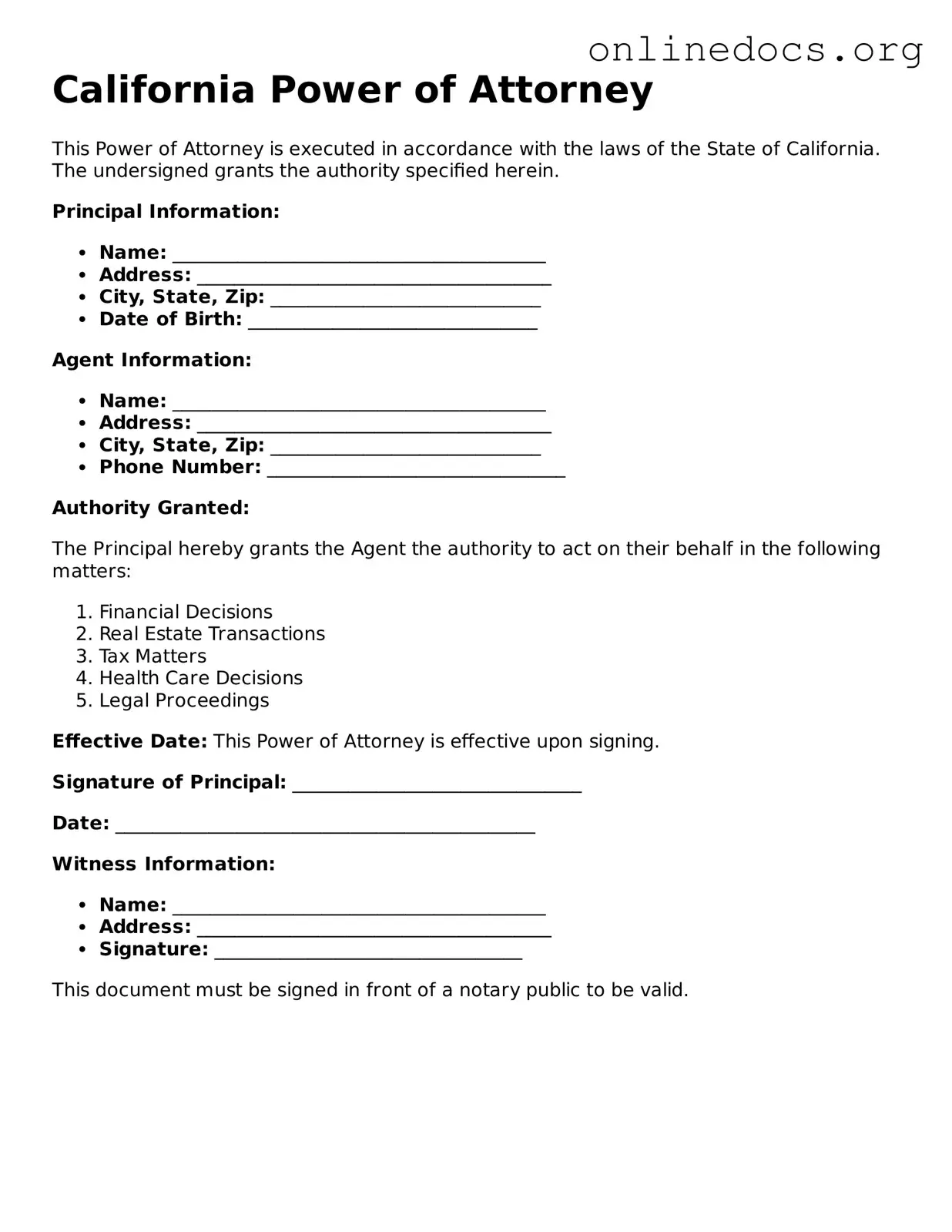The California Advance Health Care Directive is similar to the Power of Attorney form in that it allows individuals to designate someone to make medical decisions on their behalf if they become unable to do so. This document combines both a health care proxy and a living will, ensuring that the appointed person can make choices regarding medical treatment and end-of-life care according to the individual's wishes.
The Durable Power of Attorney is another document closely related to the California Power of Attorney. It grants authority to an agent to manage financial and legal matters on behalf of the principal, even if the principal becomes incapacitated. This type of power of attorney remains effective until the principal revokes it or passes away, making it a long-term solution for managing affairs.
The Limited Power of Attorney is similar in function but differs in scope. This document allows an individual to grant specific powers to an agent for a limited time or for particular transactions. For example, someone might use a limited power of attorney to allow another person to sell a property or manage a bank account temporarily.
The Medical Power of Attorney focuses specifically on health care decisions, much like the Advance Health Care Directive. This document allows the principal to appoint someone to make medical decisions if they are unable to communicate their wishes. It emphasizes the importance of having a trusted person who understands the principal's values and preferences regarding medical treatment.
The Springing Power of Attorney becomes effective only upon the occurrence of a specified event, typically the incapacitation of the principal. This type of document is similar to the California Power of Attorney as it also appoints an agent to act on behalf of the principal, but it ensures that the agent does not have authority until the principal is unable to make decisions.
The Revocation of Power of Attorney document is essential for anyone who wishes to cancel a previously granted power of attorney. This document is similar in that it deals with the authority granted to an agent, but it serves to terminate that authority rather than create it. It ensures that the principal retains control over their affairs by formally revoking any prior designations.
The Trust Agreement can also be compared to the Power of Attorney, as both documents involve appointing someone to manage assets and make decisions on behalf of another person. However, a trust typically involves the transfer of assets into a trust fund, while a power of attorney allows an agent to manage the principal's existing assets without transferring ownership.
The Guardianship document differs from the Power of Attorney in that it is a court-appointed arrangement for individuals who are unable to care for themselves. While the Power of Attorney allows individuals to choose their agents, guardianship is determined through legal proceedings, focusing on the best interests of the individual in need of care.
The Conservatorship is another legal arrangement similar to guardianship, where a court appoints a person to manage the financial and personal affairs of an individual deemed unable to do so. Like the Power of Attorney, it involves decision-making on behalf of another person, but it is often more formal and regulated by the court system.
The Tennessee Lease Agreement form is essential for landlords and tenants to establish a clear and legally binding relationship, much like other important legal documents that protect individual rights. This form outlines the responsibilities and obligations of both parties, providing clarity on payment terms and property use to ensure a harmonious rental experience. For those looking to formalize their rental arrangements, utilizing a comprehensive document such as the Rental Lease Contract is advisable.
Lastly, the Healthcare Proxy is a document that allows a person to appoint someone to make health care decisions for them if they are unable to communicate. This is similar to the California Power of Attorney in that it designates an agent, but it is specifically focused on health-related decisions, emphasizing the importance of having a trusted individual to advocate for the principal's medical preferences.
